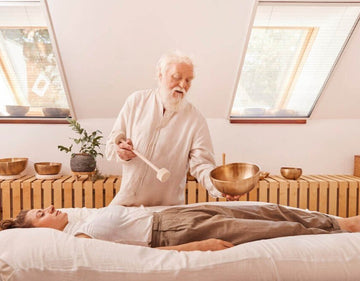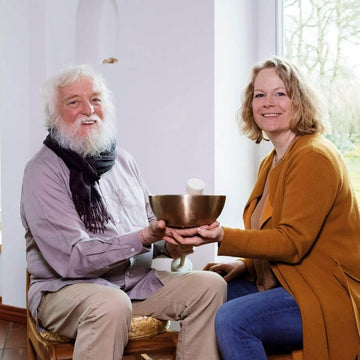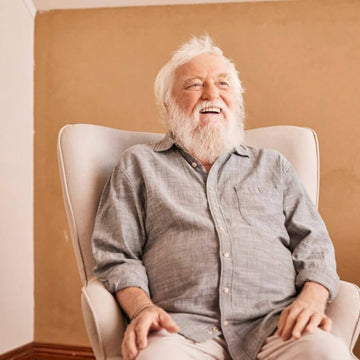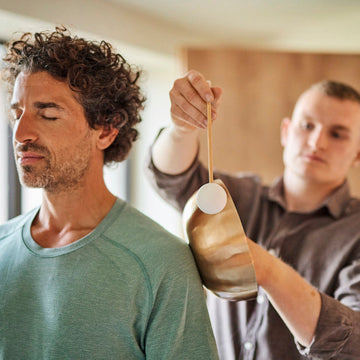It has long been known that music has a direct impact on our feelings: it is processed in the brain and can thus overlay, amplify, or distort existing emotions. For this reason, music is also used in the treatment of anxiety disorders. In this article, we will explain how you can use sound to help with anxiety.
What is anxiety?
Considered in isolation, anxiety is a natural and important warning signal from our body. When danger threatens, we feel anxiety – the body releases adrenaline and noradrenaline, the heart beats faster, and the blood binds more oxygen to increase performance and enable a quick escape. In this case, anxiety is not a paralyzing but a mobilizing characteristic that has ensured the survival of humanity.
In addition to anxiety, which is part of being human and essential for survival, there are also so-called anxiety disorders. In these cases, anxieties arise not only in truly dangerous situations, but also in completely normal everyday situations that pose no acute danger but are nevertheless perceived as dangerous by those affected. If this condition manifests itself, it is called an anxiety disorder, which can severely restrict the lives of those affected.
Sound can help you to better deal with different types of anxieties. You can use sound both for anxiety that arises from specific dangerous situations and for anxieties that go beyond that.
Caution: In case of acute physical or psychological complaints and during pregnancy, only use our exercises and tips after consulting your doctor.

What to do about anxiety?
Anxieties are as old as humanity itself. However, what used to be the anxiety about survival has mostly given way to the anxieties of our time – fear of failing at work, fear of not being good enough in the family, fear of not passing an exam... There are countless anxieties, and each one is as individual as you are. But what can you do about these anxieties?
This article will mainly focus on how Singing Bowls and sound can help with anxieties. We will go into this in more detail in the following section. Before that, however, we would like to give you a few general tips that can also help against anxiety and can also be combined with the application of Singing Bowls:
4-7-8 breathing
Inhale deeply through your nose, counting to four. While holding your breath, count to seven in your head. Then exhale deeply and with an audible sound through your mouth – for eight seconds. Repeat the breathing technique as often as you like. The breathing exercise can also be combined with sound to combat your anxieties. To do this, strike the Singing Bowl once with each inhalation.
Progressive muscle relaxation
When it comes to the question of what helps against anxiety, progressive muscle relaxation has also proven to be a valuable everyday aid. You tense different muscle groups one after the other and then relax them again. Try to actively perceive the feeling of tension and relaxation in order to release your anxieties. Combined with Singing Bowls, this creates a particularly calming exercise. If you would like to delve deeper into the topic, take a look at the Progressive Muscle Relaxation and Sound seminar at the Peter Hess® Institute.
Meditation
You can wonderfully combine meditation with sound. Many meditations focus on not suppressing anxiety, but giving it space and looking at the feeling completely independently of the cause. You can concentrate on perceiving the purely physical experience without judging it. If thoughts arise, let them pass by like clouds and remember that these moments come and go again. A meditation is all the more intense when you combine it with the vibrations of a Singing Bowl. When you strike the Singing Bowl, proceed intuitively in your rhythm.
Reflect on anxiety patterns
The reflection of your own thoughts and anxieties can be combined with a meditation or Singing Bowl application. Ask yourself the questions that concern you: Where does your anxiety come from? When do you feel it particularly clearly? What is threatening about these situations for you? Think through the situations and question your anxieties. If you want to do something about your anxiety, look at it from the outside and ask why you feel it in certain moments. Was there possibly a situation in the past in which the anxiety seemed sensible and protected you? Do you already know ways to break your learned pattern?
There are many ways to relax – perhaps completely different things help you against stress and anxiety. Some people like to read a book, others paint a picture, while others find it helpful to cook something delicious. What you decide to do is entirely up to you in the end. Music that relaxes you is a good accompaniment to all these activities in order to let go of worry-laden thoughts and concentrate on the beautiful things in life.
How can music and sounds help with anxiety?
A study in 2016, in which 62 women and men documented the effects of a sound meditation, already proved how helpful Singing Bowls can be for anxieties. They spoke of an improved spiritual well-being that all participants experienced during the Singing Bowl meditation, so that they could let go of their anxieties and worries. But why is that?
Singing Bowls lead you to a deep sense of well-being with gentle sounds and vibrations. In this way, the focus flows from the outside, which may be causing you worries and anxieties, into your innermost self – the soothing, deep relaxation begins. In addition, the sound waves emanating from the Singing Bowl strengthen body and self-awareness. This makes it easier for you to focus your attention on yourself and block out external things.
How can a sound massage with Singing Bowls help with anxieties?
So that you can perceive the sound waves particularly intensively, the Singing Bowls are placed on and around your body. The vibrating stimulus, which becomes so noticeable, initially spreads through your skin into the tissue and then flows into organs, bones, body cavities and body fluids – so your entire being can return to a uniform vibration. At the same time, the acoustic stimulation is noticeable, which has a particularly intensive effect in some areas of the brain – including the amygdala, hippocampus, hypothalamus and midbrain, as a study by Dr. Uwe Ross from 2009 was able to prove.

Can I perform a sound massage or sound meditation myself for anxieties?
A sound massage or sound meditation is particularly beneficial because with the right equipment, you can get started right away. You don't necessarily have to practice a lot or take a course to try these methods. You simply strike the Singing Bowl in front of you or on a body area of your choice with the mallet and enjoy the sounds. In our article, we have put together some exercises with Singing Bowls and gongs for you.
For a professional sound massage, you can also visit an experienced sound practitioner and let the sounds work on you without any effort on your part. However, if you are already undergoing treatment, be sure to clarify this with your doctor beforehand and talk to the sound practitioner about possible contraindications.







